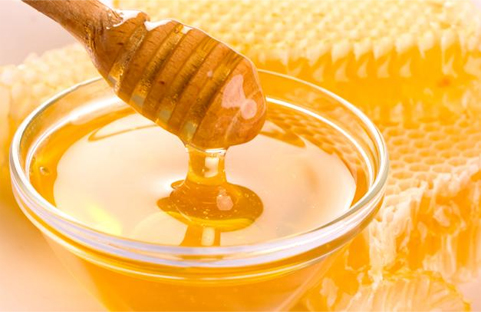الجراثيم إندوليسين (PlyPl23) مع إمكانات عالية للسيطرة على فولبرود الأمريكية The First Paenibacillus larvae Bacteriophage Endolysin (PlyPl23) with High Potential to Control American Foulbrood
الجراثيم إندوليسين (PlyPl23) مع إمكانات عالية للسيطرة على فولبرود الأمريكية
ملخص
إندوليسينز، والتي هي الإنزيمات الببتيدوغليكان مهينة أعرب خلال المحطة فى مرحلة من دورة التكاثر من البكتيريا، لديها امكانات كبيرة للسيطرة على إيجابية الجرام لمسببات الأمراض. يصف هذا العمل توصيف إنديوليسين الرواية (PlyPl23)
المشفرة على جينوم بينيباسيلوس اليرقات فج phiIBB_Pl23 مع إمكانية عالية للسيطرة تعفن الحضنة الأمريكية. هذا المرض البكتيري، والناجم من اليرقات P.، على نطاق واسع في أمريكا الشمالية وأوروبا وتسبب خسائر اقتصادية هامة في تربية النحل. القيود إلى بقايا المضادات الحيوية في العسل المفروضة من قبل تشريعات الاتحاد الأوروبي يعوق استخدامه العلاجي لمكافحة تعفن الحضنة الأمريكية ويفرض تطوير مضادات الميكروبات البديلة الأساليب. إن إندوليسين الجديد الموصوفة هنا يحتوي على N- أسيتيلمورامويل L- ألانين أميداز الحفاز ويعرض نشاط واسع الطيف ضد يرقات P. المشتركة فى المورثات. وعلاوة على ذلك، يعرض الإنزيم نشاط مضادات الميكروبات عالية في مجموعة من الرقم الهيدروجيني ذلك يتطابق مع الظروف البيئية (الرقم الهيدروجيني بين 5.0 و 7.0)، والتي تبين تطبيقها عمليا في الحقل. في درجة الحموضة 7.0، كان تركيز 0.2 ميكرومتر من الانزيم يكفي لليز 104 CFU.mL-1 من اليرقات P. في ما لا يزيد عن 2 ساعة. وجود السكروز والمواد الحاضرة في محتوى الأمعاء اليرقات لم يؤثر على نشاط الانزيم. ومن المثير للاهتمام، زيادة النشاط عندما تم حضانة PlyPl23 سابقا في الغذاء الملكي. علاوة على ذلك، في المقايسات التقييم سلامة الجسم الحي أظهرت أن هذا الإنزيم ليس سامة ليرقات النحل. ويصف العمل الحالي للمرة الأولى أن إندوليسين مشفرة في P. يرقة فج التي تنطوي على إمكانيات عالية لدمج منتج تجاري للسيطرة على المشكلة
The First Paenibacillus larvae Bacteriophage Endolysin (PlyPl23) with High Potential to Control American Foulbrood
Ana Oliveira , Marta Leite, Leon D. Kluskens, Sílvio B. Santos, Luís D. R. Melo,
Joana Azeredo
Abstract
Endolysins, which are peptidoglycan-degrading enzymes expressed during the terminal
stage of the reproduction cycle of bacteriophages, have great potential to control Gram-positive
pathogens. This work describes the characterization of a novel endolysin (PlyPl23)
encoded on the genome of Paenibacillus larvae phage phiIBB_Pl23 with high potential to
control American foulbrood. This bacterial disease, caused by P. larvae, is widespread in
North America and Europe and causes important economic losses in apiculture. The restriction
to antibiotic residues in honey imposed by the EU legislation hinders its therapeutic use
to combat American foulbrood and enforces the development of alternative antimicrobial
methods. The new endolysin described herein has an N-acetylmuramoyl-L-alanine amidase
catalytic domain and exhibits a broad-spectrum activity against common P. larvae
genotypes. Moreover, the enzyme displays high antimicrobial activity in a range of pH that
matches environmental conditions (pH between 5.0 and 7.0), showing its feasible application
in the field. At pH 7.0, a concentration of 0.2 μM of enzyme was enough to lyse 104
CFU.mL-1 of P. larvae in no more than 2 h. The presence of sucrose and of the substances
present in the larvae gut content did not affect the enzyme activity. Interestingly, an increase
of activity was observed when PlyPl23 was previously incubated in royal jelly. Furthermore,
in vivo safety evaluation assays demonstrated that this enzyme is not toxic to the bee larvae.
The present work describes for the first time an endolysin encoded in a P. larvae phage
that presents high potential to integrate a commercial product to control the problematic
American foulbrood.
تعفن الحضنة الأمريكية.




